‘Patmos, one of the islands in the Dodecanese, is where St John the Divine, traditionally identified with the Apostle John, spent several years in exile, dwelling in a cave and composing the Apocalypse, or the Book of Revelation. From that time on the island has been regarded as hallowed ground, re-consecrated through the centuries by the building of more than 300 churches.’
With this in mind, 14 H3A members arrived in Kos in time to board the Dodecanese Seaways craft to the Greek island of Patmos.
On arrival at the port of Skala we checked into our hotel and after lunch headed up to the Cave of Apocalypse at Chora the capital of the island.
Exiled to Patmos by the Roman emperor Domitian in CE95, St John the Divine is said to have made his home in this cave, though Patmians insist quite reasonably that he walked every inch of the small island, talking with its people. The cave is said to be the epicentre of his earth-shaking revelation, which he dictated to his disciple and which has come down to present believers as the Book of the Apocalypse, or Revelation, the last book of the Christian Bible. The cave is now encased within a sanctuary, which is in turn encircled by a convent.
After our visit to the cave we walked up into Chora to explore its charming back streets.
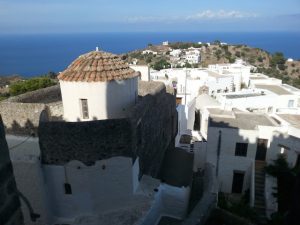
The most energetic of the group wandered further up to look down upon the rooftops.
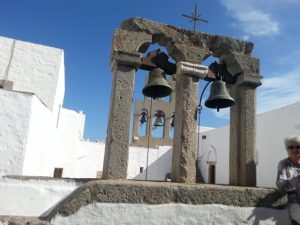
Some stayed on to enjoy the sunset.
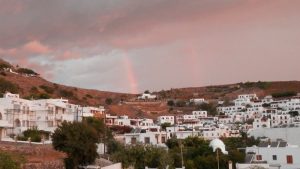
The following day we set off to visit the Monastery of St John.
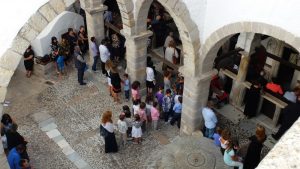
Towering over Skala and over the south of the island, is the medieval Monastery of St. John, which looks far more like a fortress than a house of prayer as it was built to withstand pirates. In 1088, with a hand-signed document from the Byzantine emperor Alexis I Commenus ceding the entire island to the future monastery, Blessed Christodoulos arrived on Patmos to establish what was to become an independent monastic state. The monastery chapel is spectacular, as is the adjoining, Chapel of the Theotokos, whose frescoes date from the 12th century. On display in the treasury is but a fraction of the monastery’s exquisite Byzantine treasures, which are second only to those of Mount Athos, a monastic state.

It was time for lunch so we drove to the northern part of the island where there is a beach famous for its coloured pebbles. Several of the party went swimming and then joined the rest of us to a delicious meal, many of us choosing the calamari – the best some of us had ever eaten.
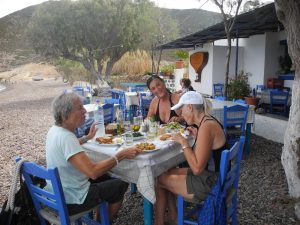
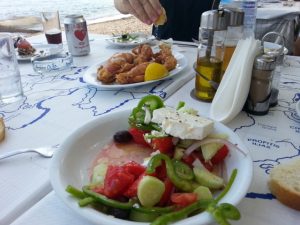
Then it was back to Skala for a siesta or walk to the south of the island. The next day we returned to Bodrum, many of us promising to return.
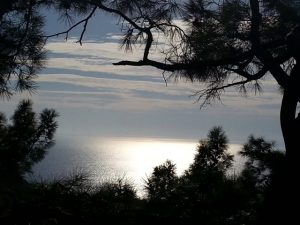
Text: Christine Davies
Photos: Jill Adams, Kim Gould, Cheryl Sabey, Teoman Sumer
